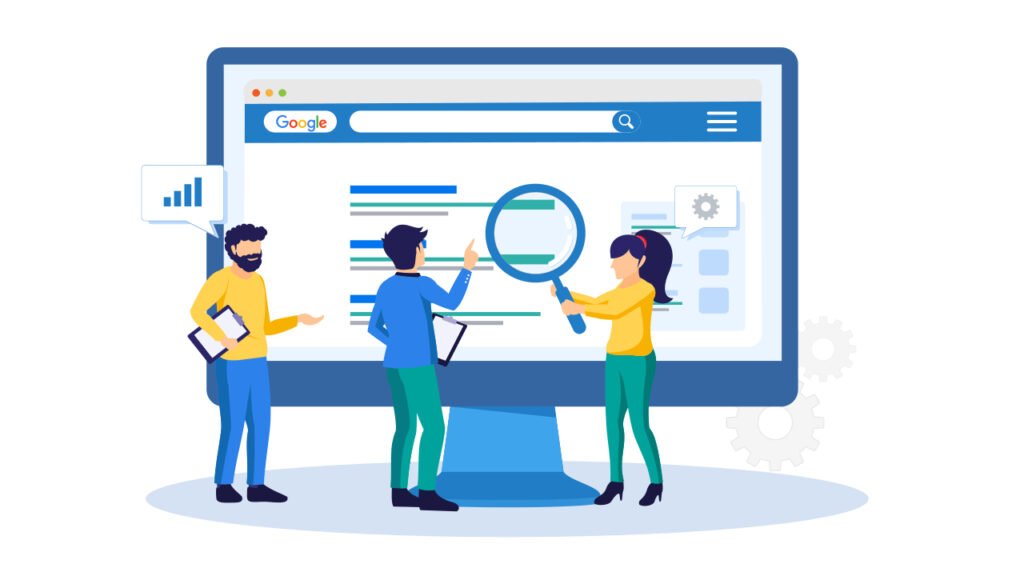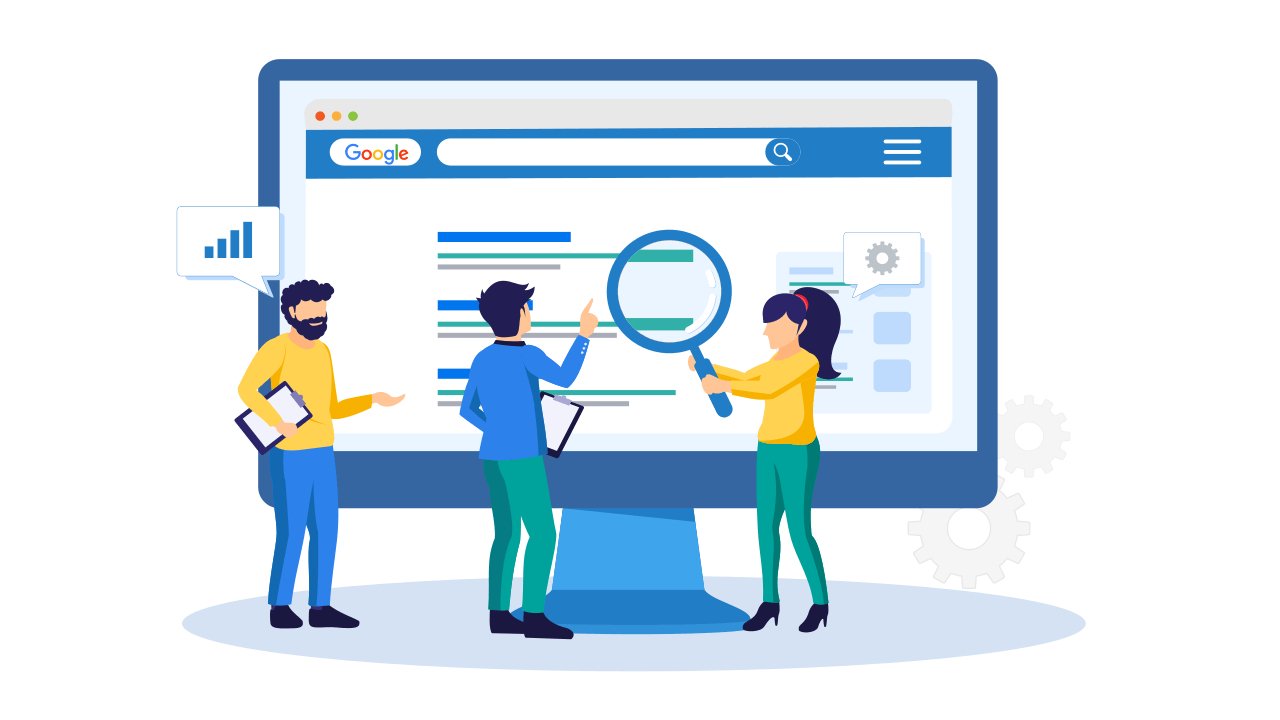
On-page SEO may be crucial to search engine optimization (SEO) since it helps Google get what each piece of substance on your site is about. The superior Google gets in your content, the higher you’ll rank in search, which implies more natural traffic, conversions, and income. Indeed superior, on-page SEO progresses client encounters if you are doing it right.
What is on-page SEO?
On-page SEO (or on-site SEO) is the method of optimizing web pages to rank higher in search engines for particular catchphrases to extend the natural activity. It includes adjusting page-level components like title labels, headings, and substance as well as Best PHP Training Institute in Mohali for look expectations with a particular set of keywords.
Technical SEO vs on-page SEO
Some SEOs utilize the terms on-page SEO and technical SEO traded. Technical SEO addresses things like page speed and location speed, copy substance, location structure, crawling, and ordering. In other words, technical optimization centres on your whole site, whereas on-page optimization centres on particular URLs. There’s moreover off-page SEO which incorporates everything that happens exterior your site, such as interface building and brand mentions. URLs help on-page SEO
Google has expressly stated that URLs offer assistance to them way better get what a page is around. So, how do you optimize your URLs?
Include a keyword: Incorporate your essential keyword in your URL to assist look motors and clients get its page content.
Consider expectation: In expansion to primary keywords, use clear words to assist pass on the reason or aim of a page.
Use real words: Utilize genuine words in your URL rather than the numbers and characters that a few substance administration frameworks pump out.
Be concise: Keep your URL structure brief and simple for look motors to get it. Also, Google often appears URLs in look comes about. If a page URL could be a long string of arbitrary letters and numbers, that doesn’t offer assistance to clients to get it to your page. The superior they get it the reason of your page, the more likely they are to tap on the look result.
Use hyphens between words: Hyphens make URLs more lucid. For illustration, if a page is almost coffee bean processors, utilize the URL www.yourcompany.com/coffee-bean-grinders.
Avoid session IDs: When conceivable, dodge the incorporation of session IDs in your URLs, as they deliver a torrential slide of URLs for the same page. Google exhorts that you just utilize first-party cookies instep.
Title tags and meta descriptions
Meta tags are one of the foremost critical on-page SEO components, particularly page titles. Each page includes a title tag that appears in search and comes about as a feature. The meta portrayal could be a brief outline of the page that shows up beneath the title on search results. Both are critical to assist search engines and clients get the reason for a page. The title tag may be a direct on-page SEO positioning calculation, whereas meta portrayals are not. Both the title and meta portrayal play a noteworthy part in whether an individual click on a posting within the search comes about. When both the title and meta depiction are optimized, it increments the Click-Through Rate (CTR) which appears to imply you get more activity. Shockingly, Google overhauled the way it handles title tags in Eminent 2021. After the overhaul, Google may revamp page titles based on other on-page components, counting headings and indeed grapple content from inbound links. Although this alter doesn’t affect rankings, it can have a gigantic effect on CTR in case the new title isn’t great.
Structured data (schema)
Structured data is specific on-page SEO code you put on your pages that makes a difference in Google’s understanding of the substance. There are particular organized information designs for a wide variety of things, including:
- Books
- Articles
- Movies
- Courses
- Ratings
- Events
- Local business info
- Star ratings
- Recipes
- Job postings
Google frequently incorporates organized information directly within the search results, appearing as a “rich snippet”. Having rich snippets increments the chances of somebody clicking on your result.
Headers improve on-page SEO
Using multiple headers (H1 tag, H2, H3, etc.) on your pages makes a difference with SEO in a few ways. To begin with, it makes it much less demanding for clients to peruse your content. In case guests experience a divider of content on a page, they’re much less likely to need to study it and will regularly desert the page. Different headers offer assistance to clients rapidly getting a handle on the substance, which moves forward by and large client encounters (a vital figure for Google). Second, subheadings offer assistance from Google to get the substance of a page. When creating headers, be sure to utilize your essential keyword in at slightest one or two H2 headers. In case it makes sense relevantly, incorporate the essential catchphrase once more within the H3 or other headers.
Does keyword density help on-page SEO?
Keyword thickness alludes to how regularly you employ a particular keyword on a web page. In case there are 100 words on a page and you utilize your target keyword five times, your keyword thickness is 5%. There are no conclusive on-page SEO rules approximately keyword thickness. In any case, you ought to utilize target keywords throughout Top PHP training company Mohali your substance. Point for an ideal keyword thickness that’s in line with the beat positioning substance for that look term. In expansion to your essential keyword, incorporate other important keywords, equivalent words, or long-tail keywords that seem to offer assistance to your page rank. These aren’t the same as latent semantic indexing (LSI) keywords, which Google says they don’t utilize. Instead, they’re fair to look at inquiries related to your subject that assist you to construct sets.
Internal linking
Internal linking is imperative to on-page SEO since it makes a difference in Google get it the relationship between pages on your location. A broad internal linking system fortifies setting and pertinence as well as your profundity of scope on a topic. Internal joins are too astonishing for client encounters. They offer assistance to individuals to find more of your substance like extra web journal posts or an important case study. A solid inner connecting methodology is additionally an incredible way to diminish your bounce rate and make strides in other Google Analytics measurements such as transformation rate and normal session duration. When it comes to on-page SEO, you ought to incorporate inner joins to and from other important pages on your location. It’s particularly critical to interface out from definitive pages like your homepage.
Utilize brief, expressive, keyword-focused stay content for your inner links. It’s too basic to interface out from the foremost pertinent areas of your substance to other pages that cover the topic. As a sidebar, don’t utilize watchwords you need to rank for in outside links to other websites. Unlike backlinks, inside links don’t boost your website’s authority since you’ll be able to include them yourself. Instep, they pipe existing specialists and pertinence from your backlinks all through your website. With this in intellect, if your space as of now includes a gigantic sum of specialists, at that point inner connecting can truly move the needle on rankings.
External links
External joins are not a coordinated positioning figure, so linking out to trusted websites won’t boost your on-page SEO rankings. Be that as it may, citing your sources with joins builds belief which is critical for clients. So, it’s best to hone to include external links when vital, particularly when citing somebody or referencing a statistic. When you include external joins, even though, don’t utilize stay content that incorporates watchwords you need to rank for. To discover why, examined my article, What Is Stay Content in SEO.
Keep in mind, on-page SEO matters. Create your web pages with these components in intellect, and you’re well on your way to way better natural search engine rankings.





